"Various scenes of the Behrens family on holiday in Skerries in the summer of 1925. Includes nice footage of a group of toddlers and babies playing with bouncy balls, in a cliff top garden overlooking the sea. One of the children is seen pushing a very ornate push chair backwards and forwards across the grass - lots of toys litter the ground around them. Further scenes include some children in bathing costumes and caps, paddling along the waters edge; a family group sitting on a rocky shore smiling at the camera and a couple of adults swimming in the sea and drying themselves on the beach" (NWFA Online Database).
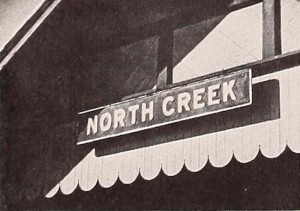
"In Ski Legs, the family filming team of Cinecoles has produced an able and amusing farce comedy on the perils of skiing for the novice. Spurred on by the waning love of his onetime sweetheart — newly devoted to the current ski champion — the hero risks life and limb on the snowy trails, to win out in the end through a series of adroitly conceived mishaps. The film is a pat illustration of the oft spoken truism that the best humor for amateur films is the humor of situation, not the "funny" acting of the actors. To Charles Coles goes the credit for crisp and competent photography, with Robert Coles responsible for the direction of a well developed plot and its genuinely amusing "gags." " Movie Makers, Dec. 1939, 635.
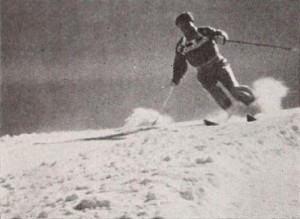
"A Ski Story, by Albert E. Sigal, has been two years in the making — but it has been well worth the effort. Laid against the scenic grandeur of Yosemite National Park, the picture is eloquent testimony both to the thrills and the dynamic beauty of the sport of skiing. Mr. Sigal begins his story slowly with an introductory sequence which sets the mood of the piece. Sequences then follow in leisurely progression of the activities of the ski school, the joys of a hot lunch served alfresco beside the clubhouse, down mountain racing and cross country rambling. Mr. Sigal's consistently good color cinematography benefits to a degree by the clarity of the Western air, a boon so often denied to skiing movie makers on Eastern slopes." Movie Makers, Dec. 1943, 477.
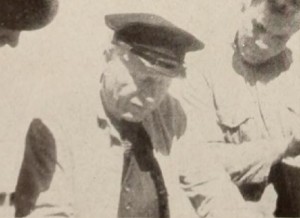
"Bringing the flavor of Europe and its people that we all like to remember, Skibet, Danish for ship, tells the story of the building of the G. C. Amdrup, a modern motor vessel with a wooden hull. The saga is carried from cutting the massive tree which becomes the keel of the ship to the final addition of paint and superstructure. Mown in from Denmark to the Danish Consulate in New York City, and from there transported to Movie Makers office, Otto Wilhjelm's film portrays the incredible amount of hand labor used in constructing a ship without the help of modern power equipment, considered a necessity in the United States. It provides the nostalgia of a great individual craftsmanship. As to the G. C. Amdrup herself, it seems safe to say — after watching the solid chunks of wood being sawed, planed and bolted snugly to the crossbeams — that she will be sailing her northern run long after our Victory ships have rusted away." Movie Makers, Dec. 1947, 534.
"Filmed by John C. Jay, Jr., ACL, of Williams College, Skis Over Skoki was shown recently at the Eleventh Annual Show of Amateur Motion Pictures, sponsored by Duncan MacD. Little, ACL. Mr. Jay's film, which is 400 feet of 16mm. Kodachrome, accompanied by sound on disc, was made for the Canadian Pacific Railway and will be shown by them to major ski clubs throughout the country. The film outlines a short story of a girl who, having grown bored with the usual mountain trails, leaves her guide during one of the downhill runs and starts over treacherous territory alone. How she ends her journey and what happens en route are shown by Mr. Jay in some of his finest pictures of skiing, a field in which he is an expert. He has made several films of skiing in the past" Movie Makers, June, 1940, 279.
"Pictures the sport of skydiving, showing how the participants jump from an airplane at high altitudes and free fall before opening their parachutes," via WorldCat.
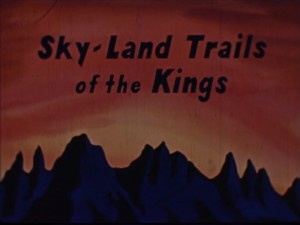
Subtitled: a story of happy days in Kings Canyon National Park.
"Victor Animatograph Company prize of a Victor Model Five camera, complete with 2.9" Hugo Meyer Lens and No. 5 carrying case for the film which, in the opinion of the judges would most nearly qualify for a major prize, excepting for insufficient photographic quality, was awarder to Lieut. D. W. Norwood, Randolph, Texas, for his picture 'Skylark'." American Cinematographer, Jan. 1933, 25
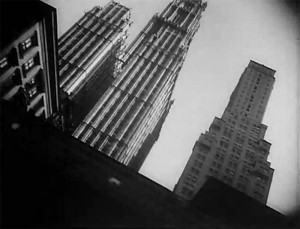
“The hard-edged graphics of 'Skyscraper Symphony' stand in contrast to other New York 'scenics' produced during the 1920s. Composed of skewed perspectives, Robert Florey’s camera looks straight up the domineering concrete behemoths. And it is hard to determine if the film mimics symphonic form as the title suggests or whether it advances a new methodology in musical-visual shot progression that reflects the alien structures depicted.” —Bruce Posner via Light Cone
Total Pages: 299